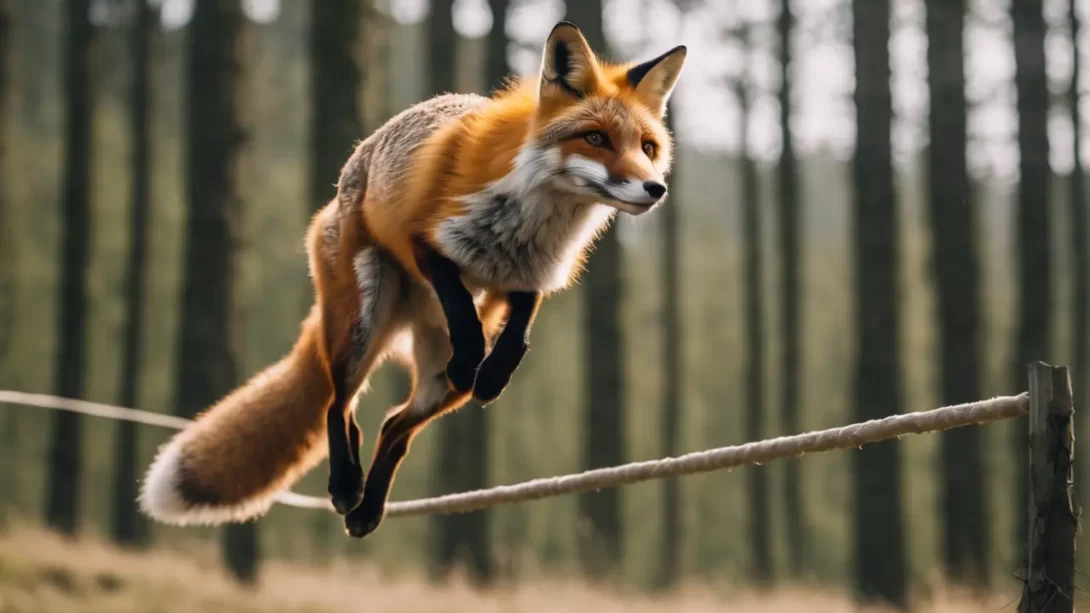Foxes, with their cunning reputation and adaptability, are among nature’s most fascinating creatures. These mammals are not just known for their intelligence but also for their remarkable agility, including their ability to jump. In this article, we explore the intriguing question: How high can foxes jump? This aspect of their physical prowess is not only a testament to their survival skills but also an interesting study in mammalian agility.
Fox Species
There are several species of foxes, each with unique characteristics and habitats. The most commonly known species include the red fox (Vulpes vulpes), Arctic fox (Vulpes lagopus), and the fennec fox (Vulpes zerda). Among these, the red fox is particularly noted for its impressive jumping abilities. Each species has evolved differently, leading to varying jumping skills which are essential for their survival in diverse environments.
Anatomy of a Fox: Built for Leaping
Foxes are designed for agility and speed. Their slender bodies, strong hind legs, and long tails contribute significantly to their ability to leap. This anatomy is particularly advantageous for activities like hunting and escaping predators. Foxes have flexible spines, which allow them to bend and stretch as they prepare to jump. This physical structure is key to understanding their leaping capabilities, setting them apart from other mammals in terms of movement and agility.
Jumping Abilities of Foxes
Foxes are capable of impressive jumps, both in height and distance. A healthy adult red fox, for example, can leap up to 3 feet high and about 6 feet in horizontal distance. This capability is not just for show; it plays a crucial role in their hunting strategy, allowing them to pounce on prey from a distance. The Arctic fox, adapted to icy terrains, also displays remarkable jumping skills, particularly when navigating snowy landscapes or evading predators.
Factors Influencing a Fox’s Jumping Ability
Various factors influence how high or far a fox can jump. Age is a significant factor; younger foxes tend to be more agile and can jump higher than older ones. Health and physical condition also play a crucial role. A fox in peak physical condition can achieve more impressive leaps compared to one that is not. Environmental conditions, such as the terrain and weather, also impact their jumping abilities. For instance, foxes in snowy or rugged terrains develop stronger muscles to aid in their leaps.
Foxes in the Wild: Jumping in Action
In their natural habitats, foxes use their jumping abilities for various purposes. One notable behavior is their hunting technique known as ‘mousing.’ This involves the fox leaping high into the air and diving headfirst into the snow or ground to catch prey, often small rodents. Observing foxes in action highlights the importance of jumping in their survival tactics, whether it’s catching prey, escaping threats, or navigating challenging landscapes. This ability demonstrates their adaptability and resilience in the wild.
Foxes in Urban Environments
Urban environments present a different set of challenges for foxes, yet their jumping abilities remain a key asset. City-dwelling foxes often adapt their leaps to navigate fences, walls, and other urban structures. The adaptability of foxes is evident in how they adjust their jumping techniques to suit urban landscapes. Interestingly, urban foxes may not need to jump as high or as frequently as their wild counterparts, given the different types of obstacles and less reliance on hunting.
The Impact of Human Activities on Fox Jumping Abilities
Human activities, such as urban development and changes in land use, can affect the natural habitats of foxes. This impact extends to their physical abilities, including jumping. Habitat fragmentation and the presence of human-made obstacles can alter the way foxes use their jumping skills. Conservation efforts are vital to ensure that these animals continue to thrive and maintain their natural behaviors, including their remarkable jumping abilities.
Conclusion
Foxes are not just skilled in stealth and cunning but are also remarkable for their jumping abilities. Whether in the wild or in urban settings, their ability to leap high and far is a testament to their adaptability and survival skills. From the red fox’s impressive leaps to the Arctic fox’s agility in snowy terrains, these animals continue to fascinate us with their physical prowess. Understanding these capabilities not only enhances our knowledge of fox behavior but also underscores the importance of preserving their natural habitats for future generations to witness their remarkable agility.



